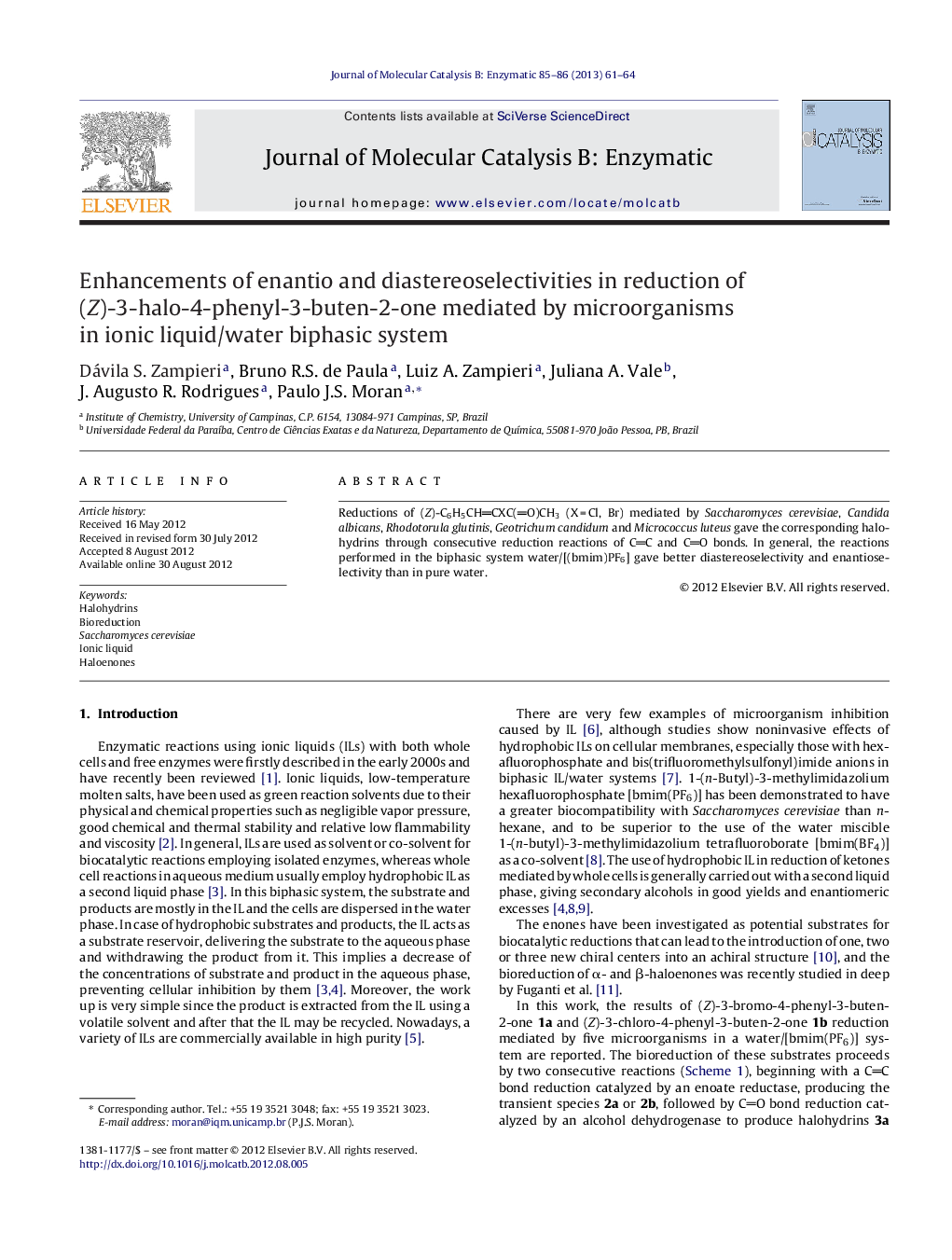| Article ID | Journal | Published Year | Pages | File Type |
|---|---|---|---|---|
| 69989 | Journal of Molecular Catalysis B: Enzymatic | 2013 | 4 Pages |
Reductions of (Z)-C6H5CHCXC(O)CH3 (X = Cl, Br) mediated by Saccharomyces cerevisiae, Candida albicans, Rhodotorula glutinis, Geotrichum candidum and Micrococcus luteus gave the corresponding halohydrins through consecutive reduction reactions of CC and CO bonds. In general, the reactions performed in the biphasic system water/[(bmim)PF6] gave better diastereoselectivity and enantioselectivity than in pure water.
Graphical abstractFigure optionsDownload full-size imageDownload as PowerPoint slideHighlights► The microorganisms-mediated reduction of 1a–b gave halohydrins 3a–b, respectively. ► The aforementioned chemical transformations proceed by a two steps mechanism. ► The reduction of CO bonds follow the reduction of CC double bonds as confirmed by the detection of the intermediates 2a–b. ► Enhancements of enantio and diastereoselectivities were obtained in ionic liquid/water biphasic system.
